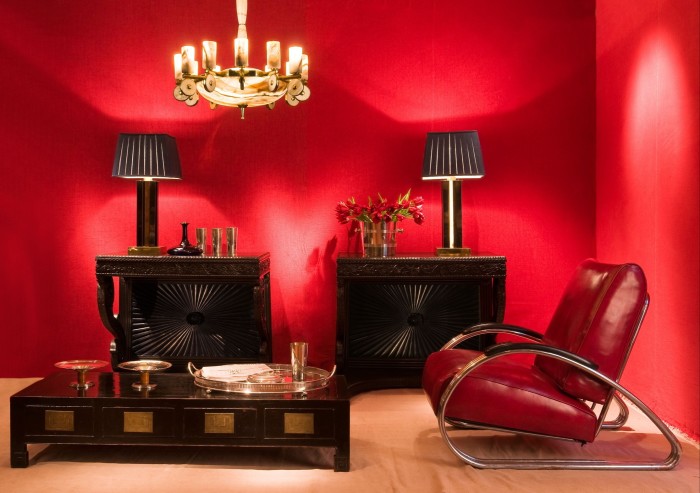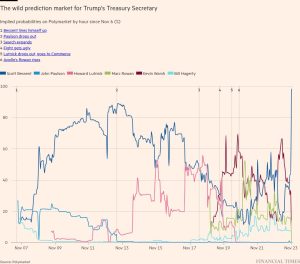the feted London antiques shop

Unlock the Editor’s Digest for free
Roula Khalaf, Editor of the FT, selects her favourite stories in this weekly newsletter.
Beloved by celebrities and designers around the world, Guinevere, the one-stop “sweet shop” for unusual antiques, is closing its doors.
It is hard not to stop and peer through the windows of this sprawling antiques shop on the western end of London’s King’s Road. For more than 60 years, this is where a constellation of leading designers — Alidad, Ralph Lauren, Rose Uniacke — has shopped for the one-off and the glamorous. It might be a Baccarat champagne bucket, a maharaja’s dining table, or gilded lions prowling across a Persian rug. The displays change weekly. There is always something to bewitch the passer-by.
But not for much longer. The shop, founded by the French-born milliner turned antiques dealer Genevieve Weaver is closing on Christmas Eve. The industry has changed a great deal since it opened in 1963. Rising rates and rents, especially in London, have forced many dealers to close their shops and migrate online. Guinevere once did a brisk trade in rarities from China, Thailand and India. But those are becoming harder to find as a new generation of collectors in those countries are buying back their heritage, says Genevieve’s son Marc Weaver, who took over the business with his brother Kevin in the early 1980s, some 20 years before Genevieve’s death.
Designers visiting from abroad also used to fill whole containers with stock. (The fashion designer Valentino once said that he had bought so much he could open his own shop). Now, rising shipping costs are putting an end to bulk buying. It is time, says Marc, to move on.

Change was also afoot when Genevieve was starting her business. She began by selling pine pieces for economic and aesthetic reasons; they were cheap and their simplicity echoed the fashion for Scandinavian furniture. Gradually, her repertoire expanded, from English oak to French and Dutch antiques. She broke with the rigid, formal layout of antiques shops of the time to create arresting window displays. One had walls lined in wrapping paper and a white floor, made from vinyl flooring turned upside down. Word spread. Mick Jagger came to browse, as did Elton John. Gwyneth Paltrow and Orlando Bloom followed. Guinevere, with its fluttering olive awning and box topiary, became a destination for international buyers, the original shop soon expanding into neighbouring sites.

The Weavers looked further afield for treasures. There were buying trips to Vietnam, Thailand and India, purchases squeezed between knees on rickshaw trips. Their first Chinese acquisition, a Han dynasty jar, had its own seat on the plane back from Hong Kong.
“She only bought what she liked. She’d say if something was ugly in the 19th century it would still be ugly in the 21st,” says Marc. With hindsight, Genevieve anticipated the way we view antiques now: as decorative objects in their own right. “Provenance and history mattered. But it had to look good. That was her number one criterion.”

She acquired a formidable reputation. As a young interior designer, John Minshaw remembers pressing a “trembling” finger to the doorbell. ‘‘The door was heavy; I pushed it open slowly. Eventually, after an eternity, Genevieve — Madame — appeared and you entered a cavern of delights. She had the eye.”
Arranged over two storeys, the four shops have never been fully knocked through, so the rooms unfold like a series of Chinese boxes. Each room has its own atmosphere: one lined in leather panels, another in gilded wallpaper. Downstairs, shelves sparkle with Murano and Bohemian glass. Purchases are made at the Louis XVI-style desk; invoices are still written by hand.

Not that you could call them old-fashioned. Guinevere was one of the first dealers to start selling mid-century pieces after Marc spotted a Paul Evans sideboard on a trip to Florida. They have done the same for tapestries, star lanterns and Japanese Imari porcelain: the 19th-century orange and blue wares currently fashionable among designers.
Although Marc says Guinevere will be likely to continue “in some form” online, it is in the shop that you get the most vivid sense of what they do best. This is “the mix”: juxtaposing styles and eras with aplomb. A lampshade made out of a sari; the Flemish tapestry against a gilded palm tree. Supplying entire, ready-made collections is another speciality: forests of obelisks, art-nouveau glass, tea caddies.
For a Mayfair townhouse, designer Guy Goodfellow acquired an instant library of vellum-bound books, bought (bibliophiles look away) by the boxload. “I’ve grown up with Guinevere,” he says. “It’s their unselfconscious approach I admire. Other dealers can feel prescriptive. Here, every object is chosen for its beauty. It’s a fantastic. We’ll miss them.”
Find out about our latest stories first — follow @ft_houseandhome on Instagram
#feted #London #antiques #shop






